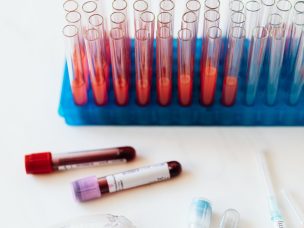Sickle cell disease requires constant symptom management. Current treatments attempt to mitigate symptoms, but new genetic approaches introduce a potential to cure the disease at its source.
Sickle cell disease (SCD) is an inherited disorder caused by a single point mutation in the hemoglobin beta gene resulting in sickle-shaped red blood cells that fail to properly transport oxygen through the blood, leading to painful blood clots and cardiovascular complications. Conventional therapies focus on symptom management, hoping to improve patients’ quality of life, but new genetic approaches have the potential to cure the disease.
Disease-modifying drugs improve symptoms by targeting their underlying biological causes. In 1998, the FDA approved hydroxyurea (HU), the first disease-modifying drug for SCD1. HU prevents polymerization of the hemoglobin S (HbS) molecule, which stops red blood cells from sickling and causing blockages. Since the approval of HU, more drugs have been developed that also target red blood cell morphology and function to prevent red blood cell sickling and subsequent complications.
Newer treatments attempt to provide a more curative solution. Stem cell transplantation is a promising therapy, but low donor availability and risk of transplant rejection prevents its widespread implementation. In 2017, the first gene therapy for SCD was reported. A group of 35 patients received the anti-sickling drug and started producing their own gene therapy-derived β-globin, which increased total hemoglobin levels and reduced sickled red blood cells. Of these, 25 patients no longer experienced vaso-occlusive events, and only 3 patients experienced such events after treatment.
Stem cell and gene-modifying therapies will lessen the burden of lifelong symptom management currently required of patients with SCD. While these treatments are promising, their high cost will limit their accessibility, and the long-term risks to patients are not fully understood. Clinicians are advised to adopt patient-centric care plans and consider a patient’s full health history to determine the best treatment options.
Sources:
Tanhehco, Y. C., Nathu, G., & Vasovic, L. V. (2022). Development of curative therapies for sickle cell disease. Front Med (Lausanne), 9, 1055540. https://doi.org/10.3389/fmed.2022.1055540









